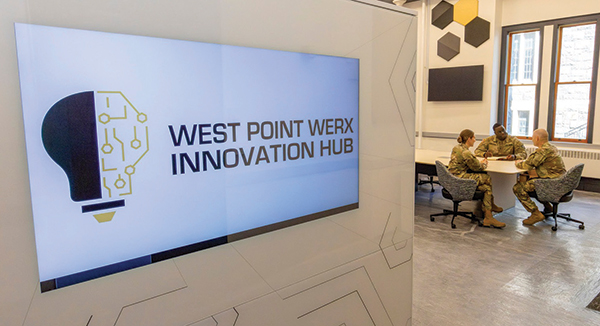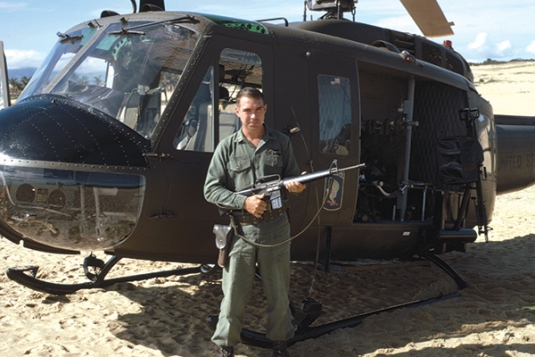The nature of warfare and the complexity of the battlefield are evolving rapidly. Advanced technologies like artificial intelligence, autonomous weapons systems, advanced materials, and electronic warfare make it paramount that our Army’s leaders understand the capabilities and limitations of these technologies in warfare and other large-scale domains. This is where the West Point Werx Innovation Hub will play a critical role.
In September, WPAOG and Academy leaders joined distinguished guests at the dedication of the West Point Werx Innovation Hub in Taylor Hall. The Werx enhances cadet leader development by bringing together cadets, faculty, and partners in an environment that deliberately fosters the creativity, collaboration, integration, and synchronization of ideas. Both COL (R) Mark Bieger ’91, President and CEO of the Association, and LTG Steven Gilland ’90, 61st Superintendent of the United States Military Academy, recognized Robb Turner ’84 and his wife, Lydia, who were the first to answer the call and enable the Academy to give West Point Werx its new home—the physical setting where innovation will take root and thrive. At the ceremony, the Academy unveiled a plaque outside of the Innovation Hub’s new space recognizing the Turners.
“To develop innovative thoughts, people have got to be willing to go out on the cutting edge to lead, experience failure, be able to step back, regroup, consolidate, and reorganize in some cases, and then push forward with the lessons they learned.”
—LTG Steve Gilland ’90, 61st Superintendent
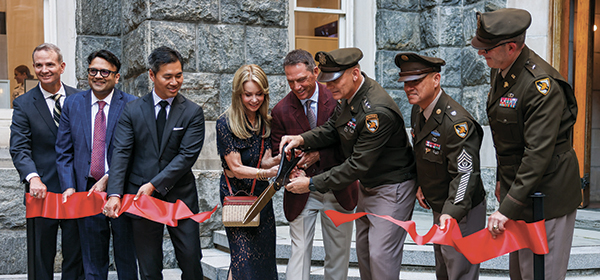

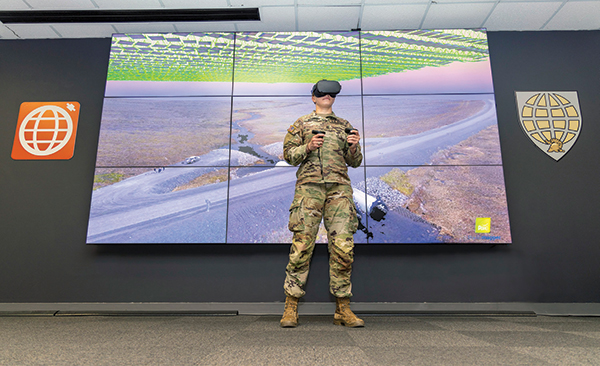
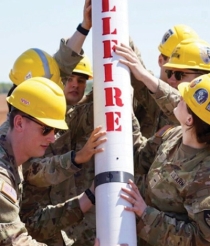
Joined by over 150 partners and supporters, this groundbreaking event marks a new era of collaboration. With 200+ partnership agreements and 30+ competitive research awards across the academic program, the Werx is set to tackle the Army’s and our nation’s biggest challenges.
Situated within the Army’s innovation ecosystem, the Werx will serve as the connective tissue across the Academy’s growing portfolio of Army, Department of Defense (DoD), industry, and higher education partners, including subject matter experts throughout USMA departments, according to Dr. Kraig Sheetz, Vice Dean for Engagement and Research, and Abdul Subhani, Distinguished Chair of Innovation. The Werx will focus intellectual capital toward the Army’s and nation’s most complex challenges through cross-disciplinary approaches to various research areas.
“It is the West Point Innovation Hub where we are planting the seeds that will grow into the arsenal of innovation,” said France Q. Hoang ’95, keynote speaker at the ribbon-cutting event. “It is the West Point Innovation Hub where we are creating the human-machine teams that will lead on the battlefield of tomorrow. And it is in the West Point Innovation Hub where we are training and inspiring the junior officers who are both leaders of character and innovators of courage.”
Elements of West Point Werx The current Werx research portfolios include Space, Sustainability, Cyber & Data, Human-Machine Integration, Laws, Ethics & Policy, Directed Energy, and Bio Tech. The ever-evolving list of research portfolios will enable Communities of Practice, consisting of domain experts from across departments, to leverage intellectual capital against critical Army needs. Innovation Education will support the teaching and study of service through entrepreneurship, disruption, and innovation (STEDI) methodologies that enable cadets to think critically and creatively as future junior officers.
“The West Point Werx Innovation Hub is a living example of multifunctional teams comprised of individuals from all over the DoD, private sector, and the Army, all working toward a shared mission.”
—BG Shane Reeves ’96, Dean of the Academic Board
The Way Ahead
The West Point Werx Innovation Hub is dedicated to supporting the warfighters of today and tomorrow. Through partnerships with Army and DoD organizations, industry and academia, the Werx provides a venue to synchronize and integrate cutting-edge research. Collaborative research projects will address real-world warfighting challenges and drive innovation.
The U.S. Army Futures Command is focused on designing Army 2040 and delivering Army 2030. West Point has the privilege of helping design the battalion commanders of 2040 (cadets) and deliver the battalion commanders of 2030 (rotating military faculty). The West Point Werx Innovation Hub will play a significant role to this end. Private support will amplify the Academy’s innovation efforts, contribute knowledge, and enable partnerships to make this vision a reality.
Why at West Point?
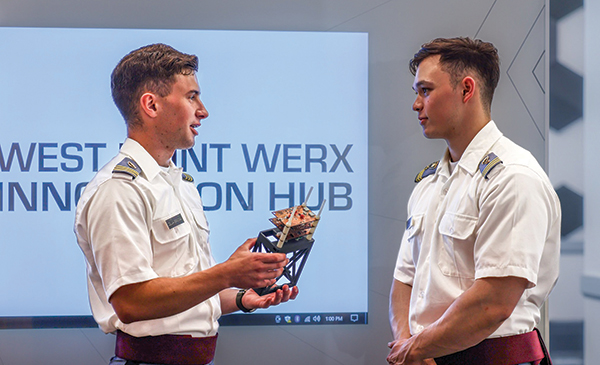
There are four primary characteristics that make West Point ideally suited to fill this critical innovation role.
- Warrior Scholars: West Point has a significant population of gifted scholars— across multiple disciplines—with military and/or other national defense experience.
- Interdisciplinary Agility: West Point has the ability to rapidly converge on important questions with subject-matter experts from across the STEM, humanities, and social science disciplines.
- Unique Position: West Point is well positioned to see and engage across the entire Department of the Army innovation ecosystem, as well as to partner with relevant industry and academic partners.
- Future Warfighters: West Point develops leaders of character to fight and win our nation’s wars. Innovation at the Academy starts with cadet education through project-based learning, which teaches them to lead cross-functional teams that can apply knowledge to solve real problems impacting national defense.
Case Study: Werx Collaboration Spotlight
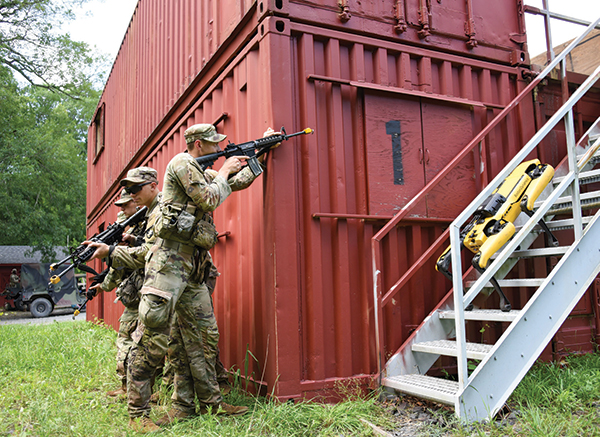
Approaching what appears to be a deep cave complex, a platoon leader stops the formation. Recent intelligence indicates possible radiological threats and a high risk of improvised explosive devices (IEDs) within the complex. The platoon leader decides to map the area with the platoon’s autonomous four-legged robot. The robot enters the GPS-obscured cave complex opening and autonomously navigates the caves and tunnels, traversing rocks and hills. When it has completed its mission, the robot returns and provides the platoon leader with a map of the cave complex, including objects of interest in each room, likely IED locations, and a radiological heat map.
USMA’s Engineering Psychology Program and the West Point Robotics Research Center worked in collaboration to integrate a fourlegged autonomous robot into two Cadet Leader Development Training lanes in the summer of 2023. The resulting data will enable the research team to develop models of trust evolution that predict future beliefs and behaviors of human autonomous teams in dynamic environments.
Through the E2MAPS Cadet Capstone, the West Point Robotics Research Center performed simultaneous localization, mapping, and classification of objects of interest using machine learning for future integration at the edge of the battlefield.

